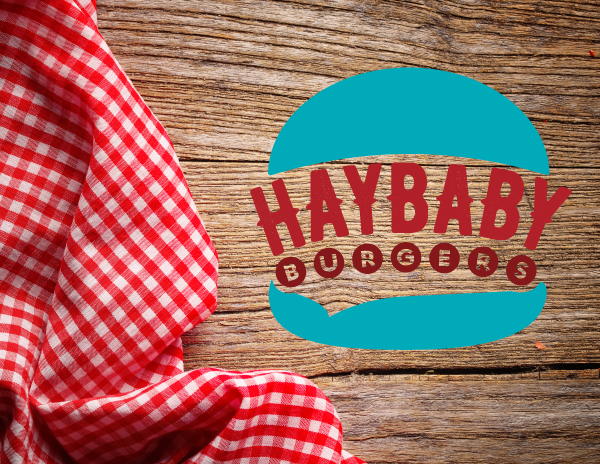Branding
Branding and design is essential to business, as it captures the essence and intent of an organization and portrays it visually. Your marketing materials are a snapshot of your brand as a whole; what message are you trying to get across with your logo design? What emotions are you emanating with your color scheme, and how does it tie back to your mission as a whole?
Two of our Chamber Members, Ruby Porter Marketing & Design and Turell Group, discuss their unique views on the importance of branding and graphic design in order to tell a story.
Capturing an Audience: Mesmerizing Branding that Tells a Story
Written by Erin Maloney, Digital Marketer, Ruby Porter, in conjunction with Megan Wood, Lead Designer, Ruby Porter.

At Ruby Porter Marketing and Design, we are not story inventors. All of the clients we work with come to us with their stories already in-hand: the reason the company was founded, the challenges they’ve overcome to flourish, and the mission they seek to further. We help businesses tell their story in such a way that it draws people in, through the creative processes of logo design, brand identity, and compelling content authoring. We recognize the importance of capturing attention, generating interest, stirring emotion, and building trust—and all of these aims can be accomplished through using words and images to cultivate a genuine connection with individuals in their target audience.
When we sit down with clients to create their brand identity or logo, we ask them a number of questions about their business and the websites or designs they feel inspired by. Our designers are skilled at using colors, shapes, space, typography, and supporting elements to then craft a look, feel, and personality unique to their brand. Colors can trigger a memory, direct the eye, and portray emotion. Shapes can create a sense of unity, structure, stability or movement. Similarly, a typeface will tell a story on its own: some feel reliable with a sense of control, and some are vintage, elegant or formal; handwritten fonts create a sense of human spontaneity and authenticity. The intentional combination of all of these design elements tell a company’s story visually, and in turn, emotionally.

For example, a local burger restaurant asked us to design their brand identity. They wanted their logo to remind people of the ‘good ‘ole days,’ and eating dinner at the family kitchen table. The owner grew up on a farm in the country, and wanted the logo and brand identity to mirror this down-to-earth, comfortable, and simple style of goodness. Our lead designer used a gingham pattern to take customers to this place with ease; she added in a retro-feeling font to remind customers of old-timey signs and restaurant menus; she chose exciting red balanced by cool turquoise for a color scheme that is calm, with a gentle invigoration, for the color palette. Additional rustic, wood images and textures helped pull together the farm-style setting, and all of these visual elements together transported their customers into Auntie’s hodge-podge kitchen, a wonderfully welcoming place to have a delicious meal.
When writing blogs for organic website content, or crafting social media posts for keeping followers current, or writing compelling headlines for advertising campaigns, we keep several goals in mind. First, we keep things consistent in our messaging. This consistency stretches from images posted on social media, through the voice of the captions, to the font that is used. Next, we create authentic, factual content that fosters trust through honesty and transparency; we do our research and give credit where credit is due. Finally, we do our best to be relevant and unique by putting ourselves into the shoes of the consumer. We ourselves hate to be advertised to on a constant basis—so we educate, inspire, and throw in a little humor now and again.
While images of small children and puppies can capture just about anyone’s attention, the staff at Ruby Porter is intentional about using design elements not only to engage an audience, but to give a company’s story life and breath. We start by being good listeners, then draw upon our experience and expertise to build meaning and identity—from the intro to the very last page.
How Telling Your Story Visually Brings Meaning to Your Brand
Written by Turell Group

Your brand is everything. It not only conveys your business story—it creates an emotion in your customer. It is your visual identity, your voice, your promise, your values, your key messages—it’s your personality.

Your brand lives in the minds of your customers, and it’s up to you to shape that perception. Visual identity plays an important role in that. Your visual identity includes your logo, colors, typography, photography and design elements—it’s what your customers picture when they hear your business name.
When you see the Nike swoosh, you think athleticism, courage and performance. When you think of Apple, you think creativity, innovation and status. What do you want people to think when they see your brand and picture your company?
One of the biggest mistakes companies make is not being visually consistent with their brand. It’s one of the many reasons brand standards are so important. A well-developed style guide helps content creators convey your message clearly and your personality cohesively. It should include a description of your voice, promise and values, as well as how to use your logo, colors and typefaces.
Find a branding professional who can help you articulate and visualize your story. Then be intentional and consistent with your brand. Own it. Foster it. Grow it. Before long, your dedication will pay off in ways that will build brand trust, recognition and loyalty.
Discover more from Springfield Bottom Line
Subscribe to get the latest posts sent to your email.




